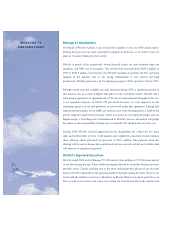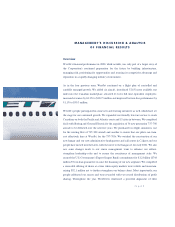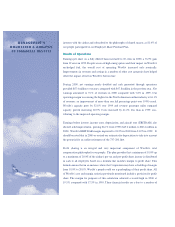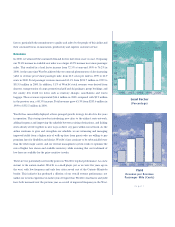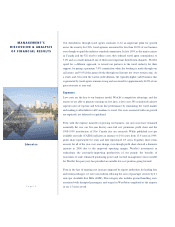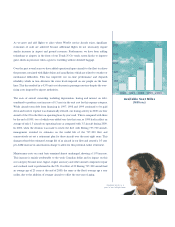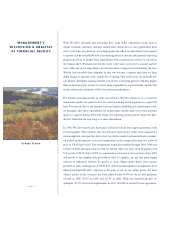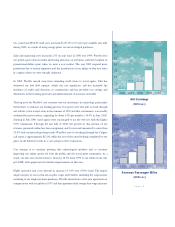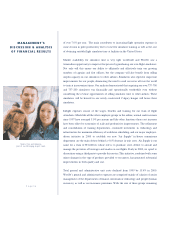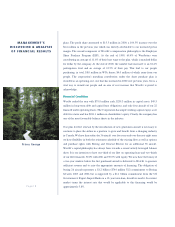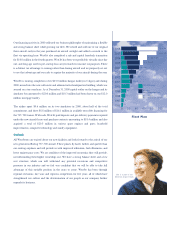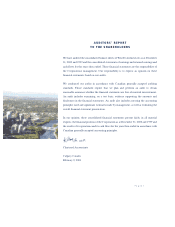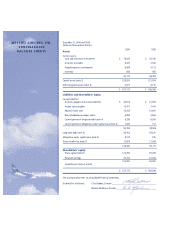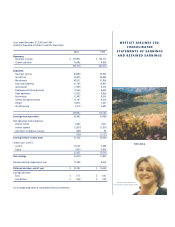Westjet 2000 Annual Report Download - page 15
Download and view the complete annual report
Please find page 15 of the 2000 Westjet annual report below. You can navigate through the pages in the report by either clicking on the pages listed below, or by using the keyword search tool below to find specific information within the annual report.
As we grow and add flights to cities where WestJet service already exists, significant
economies of scale are achieved because additional flights do not necessarily require
similar increases in airport and ground resources. Furthermore, we have been adding
technology at airports in the form of our Touch N Go touch screen kiosks to improve
guest check-in processes when a guest is travelling without checked baggage.
Over the past several years we have added operational spare aircraft to the fleet to relieve
the pressure associated with flight delays and cancellations which are related to weather or
mechanical difficulties. This has improved our on-time performance and dispatch
reliability, which in turn alleviates the stress levels imposed on our people on the front
lines. This has resulted in a 4.5% unit cost decrease in passenger services despite the ever-
rising costs imposed by airport authorities.
The costs of aircraft ownership, including depreciation, leasing and interest on debt,
combined to produce a net increase of 0.3 cents in the unit cost for this expense category.
While aircraft term debt from financing in 1997, 1998 and 1999 continued to be paid
down and interest expense was dramatically reduced, our leasing activity in 2000 saw four
aircraft of the 22 in the fleet on operating lease by year’s end. This is compared with three
by the end of 1999, two of which were added very late that year, so 1999 had in effect an
average of only 1.3 aircraft on operating lease as compared with 3.5 aircraft during 2000.
In 2000, when the decision was made to renew the fleet with Boeing 737-700 aircraft,
management revisited its estimates on the useful life of the 737-200 fleet and
conservatively set out a retirement plan for these aircraft over the next eight years. This
change reduced the estimated average life of an aircraft in our fleet and created a 0.3 cent
per ASM increase in amortization charge to allow for this potential earlier retirement.
Maintenance costs on a unit basis remained almost unchanged, showing a 1.8% increase.
This increase is mainly attributable to the weak Canadian dollar and its impact on this
cost category because most engine, engine accessory and other aircraft component repair
and overhaul work is performed in the US. Our fleet of 22 Boeing 737-200 aircraft had
an average age of 23 years at the end of 2000, the same as the fleet’s average age a year
earlier, due to the addition of younger aircraft to offset the one year of aging.
2000
1600
1200
800
400
0
1996 1997 1998 1999 2000
332
575
893
1249
1907
Available Seat Miles
(Millions)
Rayelene works as a
part of our Inflight team.



